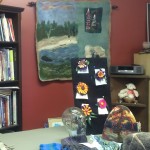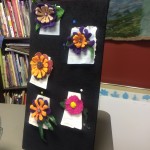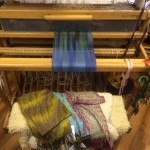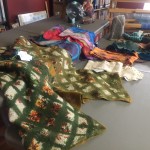By Molly Little [5]
BELLEVILLE – The Belleville Weavers and Spinners Guild [6] is turning the historical practice of weaving and spinning into a present pastime.
Members of the group create handmade clothing and other garments that express their creativity. They use traditional means of weaving and spinning to produce their crafts, and they offer demonstrations on the process to the public.
Esther Grav, a past president of the guild, said that even though the skills are no longer a necessity for daily life, it is important to keep them around.
“It’s still good to pass that information on,” she said. “The weaving and spinning … historically have always been there and you’d hate to lose that.”
Grav learned how to weave over 30 years ago, but says she does not consider herself a master because of the endless and new ways in which the skills can be used.
“It’s alway a learning curve,” she said.
While spinning and weaving techniques are no longer common, they are now used as a form of art, Grav noted.
“I feel that what we do is almost like what a painter does,” she said.
There are spinners and weavers groups throughout Canada and around the world. The Ontario Handweavers and Spinners [7] was organized in 1956.
Over time spinning and weaving skills have become less of a daily practice and more of a renewed way to express individual creativity. Margaret Penner, the president of Ontario Handweavers and Spinners, told QNet News that the techniques are used as an art form.
“There are fibre artists who go beyond creating functional objects and make pieces that have no function other than to inspire,” Penner said. ‘A woven piece of cloth can become a sculpture … they are works of art.”
There are around 50 guilds in Ontario alone, Penner said, adding that having a diverse group of people involved is beneficial for the longevity of weaving and spinning.
“It is important to have a varied demographic and very important not to exclude anyone,” Penner said. “Spinning and weaving have traditionally been taught by mentoring … so it is important to have a varied demographic to ensure weaving and spinning are passed on to future generations.”



